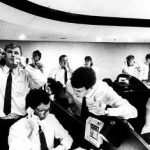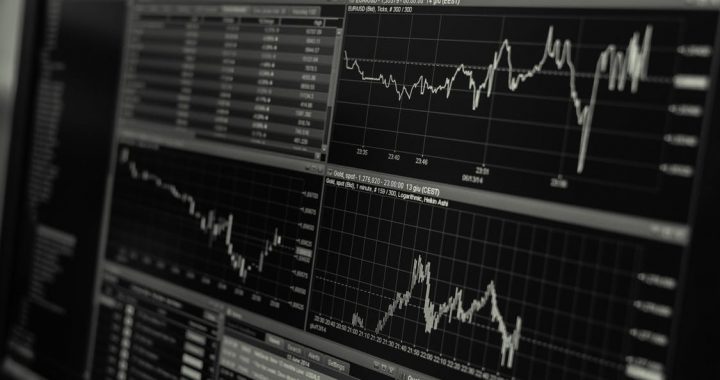Friday 20th October 2017, was the 30-year anniversary of the 1987 share market crash when the Australian share market fell 25% in a single day.

The Brisbane Stock Exchange’s public gallery on 20 October, 1987. Picture: Ted Holliday via The Courier Mail.
Hanging on my office wall I have a copy of the front page of the Melbourne Age from 21 October 1987. The front-page headline reads “Markets in wild swings – Reagan and Hawke call for calm.”
People were panicked. This was a major fall, a bigger one day fall than in 1929.
The article is on my wall to remind me that while markets can be volatile, over the long term, time can turn these crashes into mere blips on a chart.
I was 23 at the time, and while not yet working in the markets, I had a keen interest dabbling in shares with small parcels. My exposure on that day was minimal. I remember my portfolio being around $400 lower which was about a week’s wages for me then. Early the following year I purchased some larger share parcels while the market was cheap and sold these later for a profit to help fund my university expenses as a ‘mature’ age student.
Prior to the crash shares were overvalued and debt was rife. Alan Bond, Christopher Skase and John Splavins had built large business on debt. This worked very well while share prices increased, but when the prices plunged, it wiped them out and also hurt their shareholders.
Shares were overvalued prior to the crash, as they had been for the preceding twelve months, yet we still saw the market climb higher and higher. The All-ordinaries was trading on Price Earnings (P/E) Ratio of 26 prior to the crash, a high valuation number by any measure.
Today the Australian share market P/E is around 16.5. I believe that, overall, the share market is marginally overvalued. It is harder to find companies that meet my valuation, and subsequently investment requirements, and consequently my clients’ cash holdings have been increasing. But we are a long way from where we were in 1987. Still, any U.S. correction from their higher valuation levels will impact us.
Things to remember about the Crash of 1987:
- The fall only wiped out the gains the market had made the previous 12 months
- Home loan rates at the time were 14.5% compared to 5.1% now
- It took six years for the index to beat the high set before October 1987
What investment lessons have I learnt from the crash of 1987:
- Only buy companies with low level of debt, reliable earnings and a durable competitive advantage
- Work out your intrinsic value for a company and only buy when price is below that valuation.
- Stay the course, be patient
- even if you had bought the index on the high just before the crash and kept it today you would still have 10 times the amount invested.
- Be careful of the herd
- When everyone (the taxi driver’s test) is buying and wants to talk shares maybe it’s time to think about doing the opposite.
- Panicking and selling with the herd meant you missed the recovery and would have been worse off.
For investment advice or management, contact Allan Hanson for a complimentary initial consultation.
